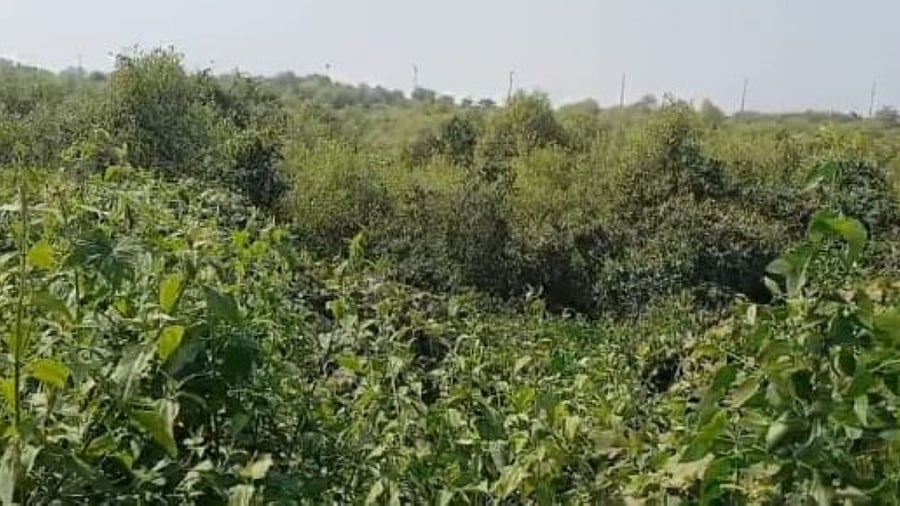
The Pagote mangrove site has regrown.
Credit: DH Photo
Navi Mumbai: In a dramatic ecological fightback, nearly 10,000 mangrove plants illegally buried in Uran have grown back, powered purely by the return of tidal water and not by official restoration effort.
“It is reminiscent of a phoenix rising from the ashes — reborn after destruction,” NatConnect Foundation Director B N Kumar remarked. It was also a natural victory over human blunder — and a stern indictment of the authorities who failed to prevent the destruction in the first place, he observed.
The mangroves were wiped out at two locations: inside the NMSEZ at Pagote and along the NH-348 highway expansion corridor, both in clear violation of the Bombay High Court’s order protecting every single tidal plant.
At Pagote, more than six acres of mangroves were smothered under massive debris during the 2019 Lok Sabha election period, when most government officials were away on poll duties. NGOs Sagar Shakti and NatConnect Foundation repeatedly alerted the administration.
Neenu Somraj, then member secretary of the High Court–appointed Mangrove Protection and Conservation Committee, personally inspected the site after her election assignment and stopped trucks dumping debris, Kumar recalled.
The Mangrove Committee subsequently directed CIDCO and the Raigad district collector to remove the debris and restore the flattened mangroves. These orders were blatantly ignored, said Nandakumar Pawar, head of Sagar Shakti.
And then nature intervened. “Tidal waters forced their way back, washing away or swallowing the rubble. Mangroves simply began growing again,” Pawar said. Today, the area shows no trace of debris, only a fresh green spread of young mangrove stands.
A similar revival unfolded along NH-348. In 2018, NHAI’s highway and bridge work blocked tidal flow, drying thousands of mangroves that later ended up as firewood for nearby communities. CIDCO’s environment officer promised action against the contractor — “a promise that never materialised,” Kumar said.
NatConnect later escalated the issue to Union Minister Nitin Gadkari, after which tidal channels were gradually reopened, enabling the mangroves to regenerate naturally. “It is a very pleasant sight now, with mangrove plants standing erect as a symbol of victory over irresponsible environmental destruction,” Kumar observed.
Both Pawar and Kumar said they were relieved to see the wetlands healing but warned against complacency. “Mangroves have bounced back, but those who buried them must face consequences,” they said. “High Court orders mean nothing if violators walk free.”
Mangroves shield coastal communities from storm surges, erosion and flooding, and serve as crucial nurseries for marine life. They absorb carbon far more efficiently than most forests and act as a natural defence for eco-sensitive zones like Uran. Their spontaneous resurgence is a sharp reminder: when protected, mangroves safeguard us — and when destroyed, they expose every coastal settlement to greater risk.